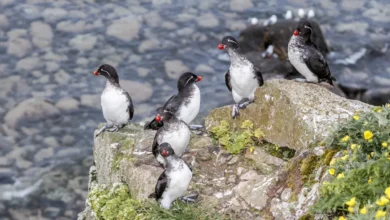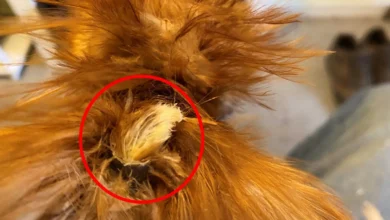The Channel-billed Toucans (Ramphastos vitellinus) is a toucan that occurs on the island of Trinidad and in tropical South America, in the southeastern Amazon, as far south as southern Brazil and central Bolivia.
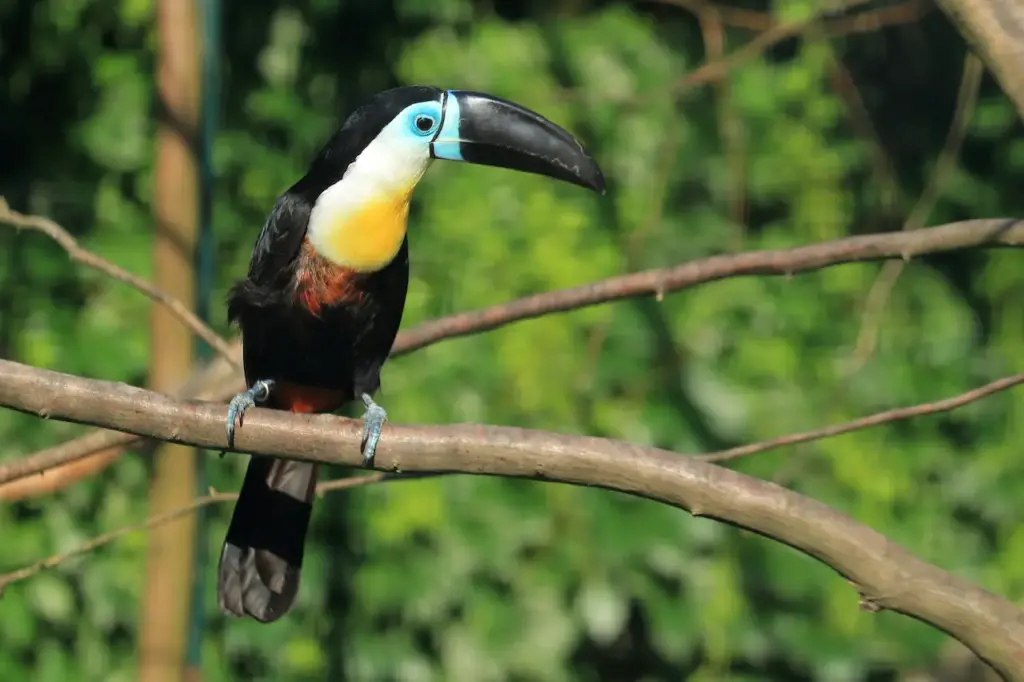
They occur in the forest and woodland areas, with a preference for humid regions. Locally, they extend into drier regions, particularly along water ways.
They are found in lowlands areas, but may wander up to an altitude of 1700 m (5600 ft).
Subspecies
Channel-billed Toucan (Ramphastos vitellinus vitellinus) – Nominate Race
- Range: North-eastern part of range.
- ID: Its upper plumage, abdomen, tail and most of the bill are black. The uppertail and undertail feathers are red. The bare eye-patch and bill base are blue. The throat is white. The chest is yellow-orange fading to white on the sides. The lower chest sharply contrasts with a broad t red band. The irises are dark brown.
Yellow-ridged Toucan (Formerly Ramphastos culminatus; now Ramphastos vitellinus culminatus)
- Range: Eastern and south-central part of range.
- ID: Resembles the nominate for described above, except it the yellow base of the upper bill, the orange-yellow uppertail feathers, the white throat and chest with a narrow red band separating the latter from the black abdomen. SImilar Species: Also resembles the Cuvier’s Toucan (Ramphastos tucanus cuvieri)
Citron-throated Toucan (Formerly Ramphastos citreolaemus; now Ramphastos vitellinus citreolaemus)
- Range: Northern Colombia and north-western Venezuela.
- ID: Resembles the Yellow-ridged Toucan described above, except it has a clear yellow tinge to the throat, a yellow-orange patch at the very base of the bill, and pale bluish irises.
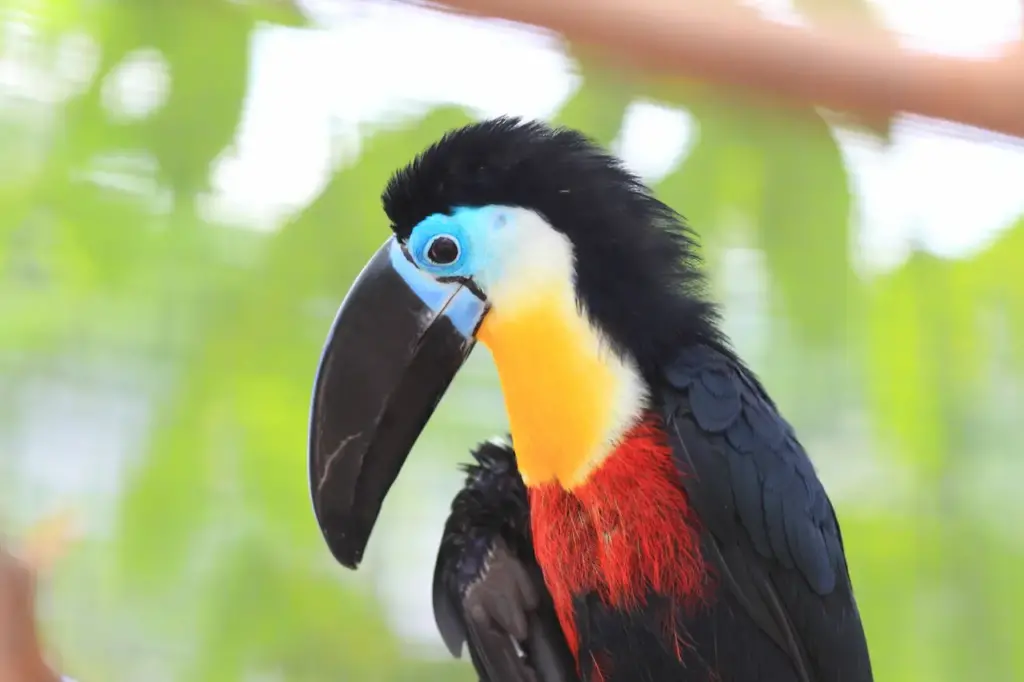
Ariel Toucan (Formerly Ramphastos ariel; now Ramphastos vitellinus ariel)
- ID: Resembles the nominate race, except the base of the bills is yellow, the skin around the pale blue eye is red, the entire throat and chest are orange.
Description
The Channel-billed Toucan is brightly colored, with a huge bill. The average lengh is 48 cm (19 in) with a 9-14 cm (3½-5½ in) bill.
Personality
Unlike the popular parrots, captive toucans cannot learn to talk. On the bright side, they are also much quieter. Generally, they are friendly and easily tamed.
They are fairly long-lived with a lifespan around 20 years.
Breeding / Nesting
The mating ritual is a fun-loving affair for toucans, as they throw fruit to one another.
Like all of their other activities, nesting happens high up in hollow areas in trees. The bill is not effective for digging or any other type of extensive excavation work and so they must rely on holes already formed by other means.
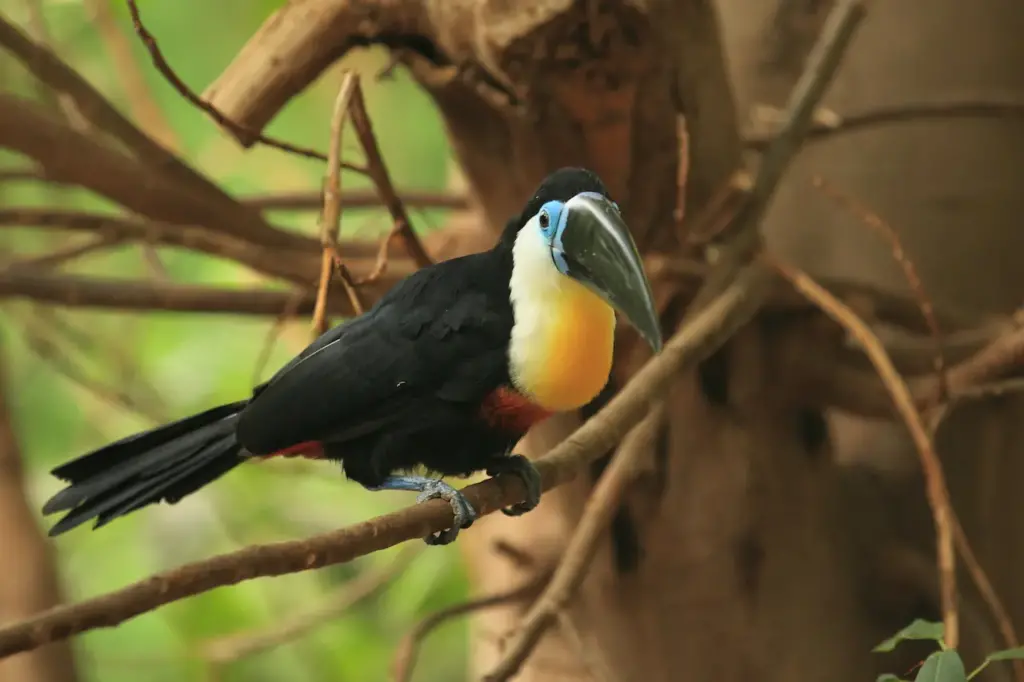
The nests are not lined, but the two to four shiny white eggs that are laid each year rest on a few wood chips created while enlarging the opening or on various kinds of regurgitated seeds collected for this purpose. Parents share equally in incubation duties, but rarely sit on the nest for more than an hour at a time and the eggs are often left uncovered. Both parents share in feeding fruit to the babies for up to 8 weeks.
After 16 days the nestlings are born blind, with no trace of down on their pink skin. The bill is unremarkable until about 16 days old when it takes on the distinguishing features of the toucan, and requires up to four months to develop fully. Feathers begin to expand at 4 weeks.
Babies have pads on their elbows that protect their feet by keeping them elevated until they fledge.
Breeding in captivity requires attention to a number of details. Even successful breeders report rates as low as 30% for the incubation of eggs.
Calls / Vocalizations
The Channel-billed Toucan’s call described as a croaking cree-op cree-op cree-op.

